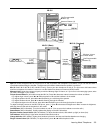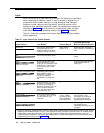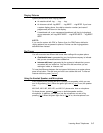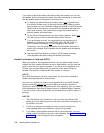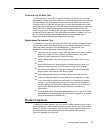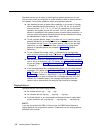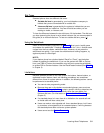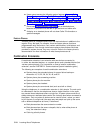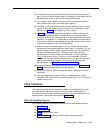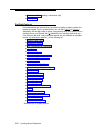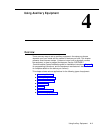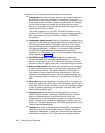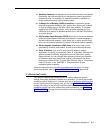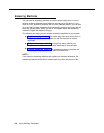
■
■
■
■
■
■
■
■
■
■
■
■
A second call can ring at the system phone while the standard phone is
busy, but do not use the system phone to answer the second call until the
standard phone is idle or the first call will be disconnected.
If you make a voice-signaled intercom call to a combination extension
with a system phone, only the system phone signals.
The lights on the system phone show what the standard phone is doing
as well as what the system phone is doing. For an explanation of light
patterns, see “Lights” at the beginning of this chapter.
If Privacy is active at a combination extension, no other extension can
join a call in progress at either a system phone or a standard device.
(However, a phone can interrupt a call on a standard device at the same
extension. For example, if a system phone and modem are combined at
an extension, picking up the handset of the system phone could interrupt
a modem transmission, even if Privacy is active.)
While on a call on a standard phone, you can use the system phone’s
dial-pad and fixed-feature buttons to handle calls. For example, you can
use the system phone to select a specific outside line, and conduct the
call on the standard phone. Or, if someone is on a call using the
standard phone, someone else can put that call on hold by pressing
[
Hold ] on the system phone. To do this, it is not necessary to lift the
handset of the system phone. Held calls do not ring back at a standard
phone in a combination extension. To retrieve a held call from the
standard phone, use Direct Line Pickup—Active Line.
A standard phone’s message waiting light will not light if Background
Music is playing through system phone’s speaker.
If you have Caller ID, only the system phone can display the Caller ID
information.
The ringer equivalence number (REN) of a standard device or the
combined REN of two devices cannot be greater than 2.0. (The REN of a
system phone is 0.0.)
Using Telephones
Your system provides intuitive operation of basic call handling features, plus
dial-code features that make it easy for users to handle calls flexibly and
efficiently from both system and standard phones. For more information on a
specific feature, refer to the feature name in Chapter 5.
Basic Call Handling Features
The following features are available from both system and standard phones:
Making Calls
Answering Calls
Hold (placing a call on hold)
Transferring Calls (passing a call to another system extension)
Learning About Telephones
3-11



